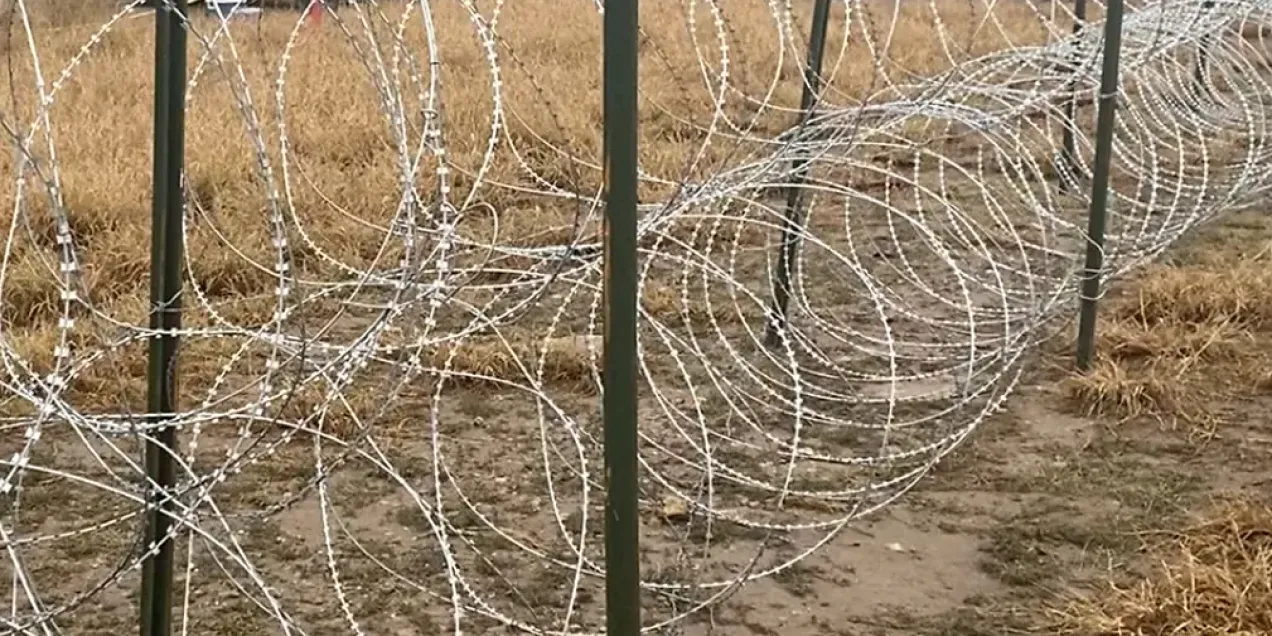
Ground-based Egoza installation is a reliable solution for creating autonomous security lines that do not require fences, walls, or supporting infrastructure. This type of barrier is effectively used in field conditions, at temporary sites, on open terrain, and in areas lacking engineering infrastructure. Installing Egoza directly on the ground allows for rapid perimeter deployment using concertina or pyramid-type barriers. This method is suitable for securing construction sites, borders, military and industrial facilities, as well as for blocking access roads, setting up temporary checkpoints, or protecting disaster-affected zones.
Advantages of Installation Without Support Structures
The key advantage of installing Egoza directly on the ground is independence from stationary infrastructure. The installation does not require fences, walls, or foundations. All components of the barrier are placed and secured directly on the terrain. This is especially useful in situations where traditional fencing is impractical – such as in field operations, wooded areas, slopes, riverbanks, or wastelands.
This method allows for quick coverage of large areas. Egoza coils retain their tension, shape, and stability even with a minimal number of fastening points. Higher coil density and proper stretching increase the barrier’s strength and deterrent effect.
Types of Barriers Used
The most commonly used ground-based barriers are concertina Egoza wire with diameters ranging from 600 to 1500 mm. These are stretched along the perimeter and fixed with metal stakes, pegs, or anchors. Also widely used are pyramid-shaped barriers, assembled from three or six spirals connected into a voluminous structure. This offer maximum stability and occupy significant space, making them especially difficult to breach.
For temporary installations, mobile Egoza barriers can also be used. These come pre-mounted on frames and are set directly on the surface without additional supports.
Methods for Ground Fixation
The most reliable method is using screw piles. These are manually or mechanically driven into the ground, after which steel reinforcement bars are passed through the spirals and welded to the piles. This creates an almost unbreakable connection that cannot be removed without heavy equipment.
An alternative is to hammer stakes or metal pins through the lower coils into the ground. This is quicker but less stable, especially in loose or frozen soil. Anchors with hooks are sometimes used, with a tensioned cable or wire running along the entire length of the barrier.
Preparation and Work Sequence
- Mark the perimeter and define anchor points;
- Prepare the barriers (uncoil, check connections);
- Stretch the concertina along the line with even coil spacing;
- Fix each coil to the ground (every other coil or continuously);
- Connect the ends, and if needed, link multiple coils;
- Check stability and add reinforcements in vulnerable areas.
When to Use This Installation Method
Ground-based installation is especially effective when:
- A permanent fence cannot be installed in time;
- A temporary yet secure barrier is needed;
- The terrain is unstable or prone to tunneling;
- Rapid deployment in field conditions is required (training, camp security, emergency control).
Additional Operation Tips
Regularly inspect all fixings and the condition of the wire to identify sagging or damage in time. For use in humid environments, choose corrosion-resistant materials – more details can be found on the Egoza Corrosion Protection page. For enhanced protection, a second level of concertina can be installed above the first, either at an angle or in a “V” configuration.
If you plan to combine ground-based installation with structural mounting, see the Combined Egoza Installation page.